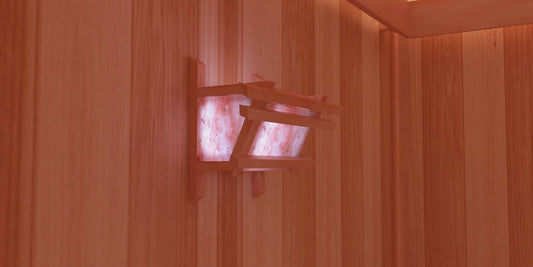Salt therapy has been around for centuries, yet, it's still relevant today—with good reason. This activity can help improve lung health, depression, and anxiety.
History of Halotherapy
The first Halotherapy device was developed in 1980 at the Odesa Science Research Institute. The machine (halogenerator) was designed for grinding and crushing salt and releasing the particles into the air to replicate an underground salt mine environment.
What is halotherapy?
Halotherapy, or salt therapy, is an activity that consists of breathing in microscopic salt particles that are said to improve lung problems such as asthma, bronchitis, and cough.
Types of halotherapy
There are two types of halotherapy rooms; active and passive.
Active salt room:
This room uses a machine called a halogenerator. A halogenerator is a machine that grinds salt into microscopic particles and releases them into the air of a room. The salt particles are claimed to absorb irritants, including allergens and toxins, from the respiratory system, thus improving overall lung health.
Passive salt room:
Unlike active salt rooms, this room does not have a halogenerator. Instead, passive rooms are filled with different types of salt panels, such as Himalayan Salt Wall Panels. These passive salt rooms are often designed to control the environment by regulating the airflow, humidity, and temperature to allow for an allergen and pollutant-free environment.
Does salt therapy have health benefits?
To answer this question, we need to look at the history of salt caves or salt rooms and how it was first theorized they could improve our health.
In 1843 a Polish physician named Feliks Boczkowski noticed that salt mine workers did not experience respiratory issues or lung disease compared to other miners. Almost one hundred years later, a German named Karl Hermann Spannagel noticed that his patients' health improved after hiding in the salt caves while avoiding heavy bombing during WWII. Due to the complications of those times, further studies could not be conducted.
Nowadays, more and more doctors suggest that the benefits of halotherapy might be more than just a theory. A great example is a Senior Scientific Advisor to the American Lung Association named Dr. Norman Edelman, which mentioned how salt falling into our airway linings could thin mucus. This makes breathing easier for people with obstructive lung diseases such as asthma or COPD. Furthermore, higher concentrations of sodium chloride in the environment are "allergen-free and thus good for people with allergies affecting their lungs."
Health benefits of salt therapy
Unclogs airways:
When you breathe in dry salt particles deep into your lungs, your airways absorb them. This process cleanses the harmful particles that cause your airways to narrow and makes it easier to breathe. This is why doctors recommend halotherapy as an "extra" for people who have asthma.
Cleanses bacteria:
Salt is a remarkable natural antibacterial, antimicrobial and antiviral– that's why it's been used as a preservative in the past. When salt enters your lungs, it dries bacteria out; without water, bacteria can not function properly, ultimately dying.
Great anti-inflammatory:
Inflammation originates when white blood cells try to protect the body from bacteria, infections, or other foreign organisms. Salt is an excellent anti-inflammatory as it can cleanse toxins from your nasal cavities and airways, thus reducing swelling.
Improves the skin:
Salt can help stabilize the skin's PH levels and enhance skin regeneration and elasticity. In addition, halotherapy can help reduce skin conditions such as dermatitis, acne, and rashes.
Reduces anxiety and depression:
Breathing microscopic salt particles flood the body with negative ions. Negative ions induce a biochemical response that increases the level of serotonin in the brain. Serotonin, known as the "feel-good chemical," is in charge of our mood. Higher levels of serotonin help alleviate depression and relieve stress and anxiety.
Disclaimer
Although halotherapy is considered safe and effective for preventive and restorative health care, it is not a medical treatment and does not offer a cure. You should consult your doctor if halotherapy is right for you if you have a fever, open wounds, cancer, severe hypertension, mental disorders, active tuberculosis, or if you're pregnant.
Summary
Both active or passive halotherapy rooms can offer the same benefits, and choosing between one will ultimately come down to preference.
Halotherapy is a great way to improve certain health conditions such as asthma, allergies, or anxiety. Salt therapy can also work as an anti-inflammatory and is a remarkable natural antibacterial, antimicrobial and antiviral.
Although some health benefits have been found, further studies must be conducted to fully understand the way halotherapy works and how it can improve our overall health.




